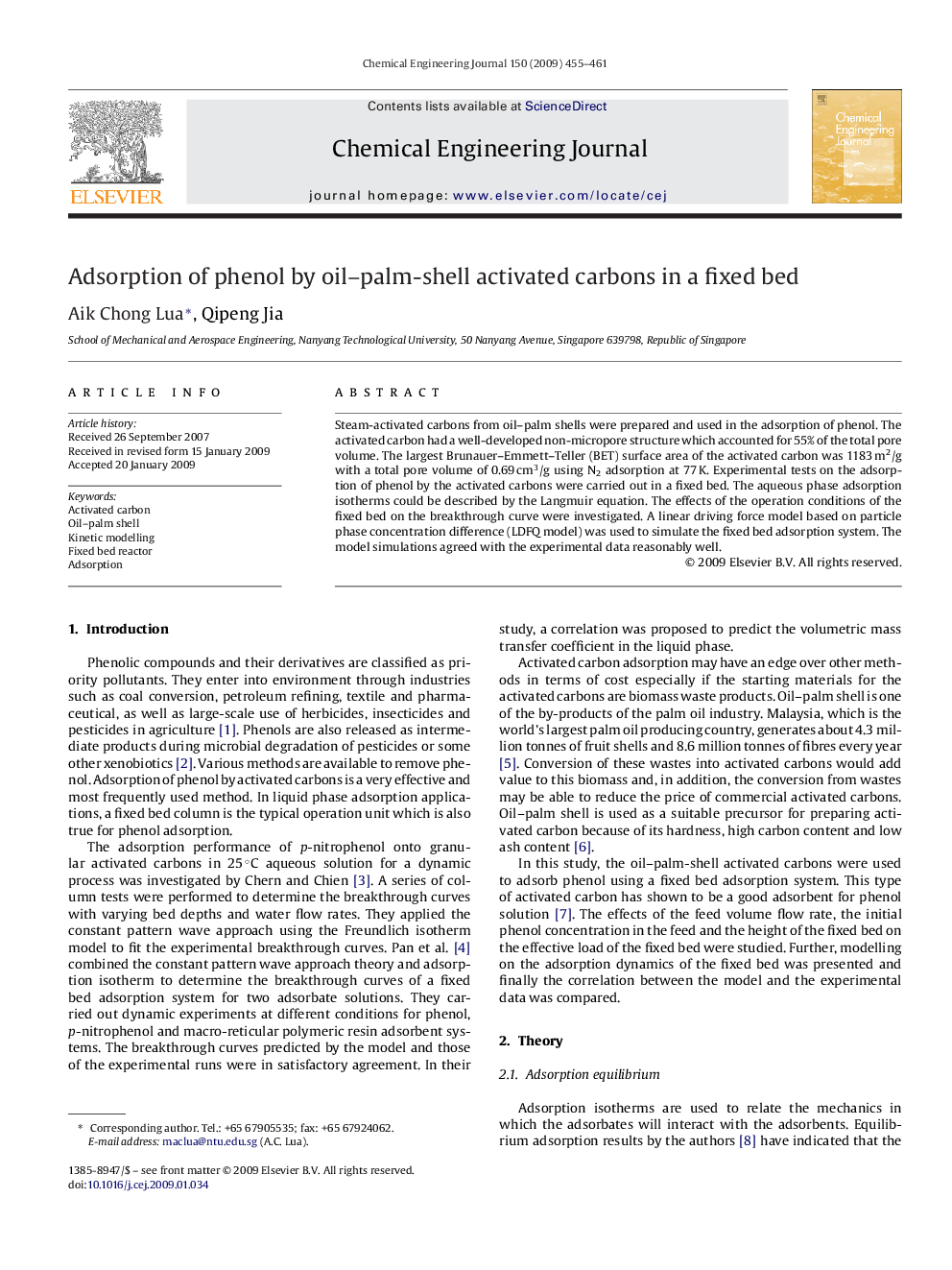| Article ID | Journal | Published Year | Pages | File Type |
|---|---|---|---|---|
| 152821 | Chemical Engineering Journal | 2009 | 7 Pages |
Steam-activated carbons from oil–palm shells were prepared and used in the adsorption of phenol. The activated carbon had a well-developed non-micropore structure which accounted for 55% of the total pore volume. The largest Brunauer–Emmett–Teller (BET) surface area of the activated carbon was 1183 m2/g with a total pore volume of 0.69 cm3/g using N2 adsorption at 77 K. Experimental tests on the adsorption of phenol by the activated carbons were carried out in a fixed bed. The aqueous phase adsorption isotherms could be described by the Langmuir equation. The effects of the operation conditions of the fixed bed on the breakthrough curve were investigated. A linear driving force model based on particle phase concentration difference (LDFQ model) was used to simulate the fixed bed adsorption system. The model simulations agreed with the experimental data reasonably well.
